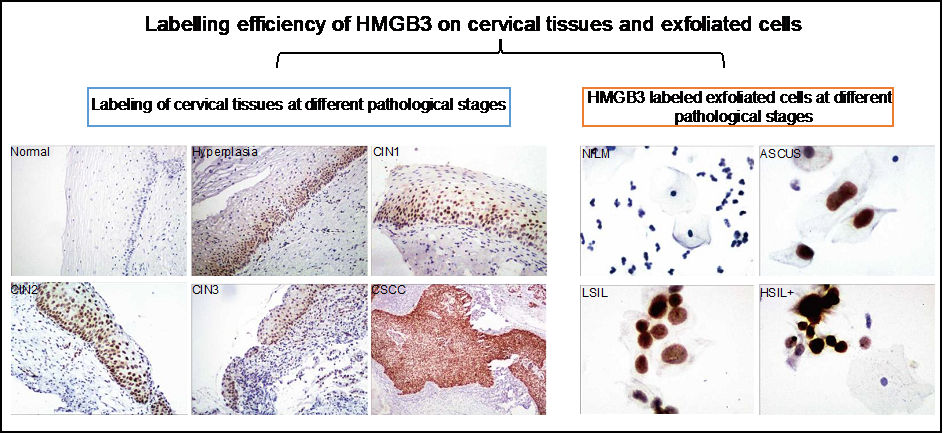
Recently, Professor YANG Wulin's research group from the Institute of Health and Medical Technology, Hefei Institute of Physical Sciences of Chinese Academy of Sciences developed a new technology for early screening and monitoring of cervical precancerous lesions.
The results were published in Genes & Diseases.
Cervical cancer ranks as the second most prevalent cancer in women globally, with persistent human papillomavirus (HPV) infection as its leading cause. The precancerous lesion induced by persistent HPV infection is referred to as intraepithelial neoplasia and may progress to invasive cancer if left untreated. Current clinical screening methods for cervical cancer and precancerous lesions rely heavily on cervical cytology techniques such as Papanicolaou smear, Thin-layer cytology, and P16/ki67 double staining technologies. However, identifying diseased cells using these methods can be time-consuming, and prone to misdiagnosis. Therefore, searching for new markers that can improve the shortcomings of current screening techniques is paramount.
"We used gene chip data combined with immunohistochemistry and immunocytochemistry to screen out the dominant candidate markers, HMGB3, from a large number of differentially expressed genes," said Prof. YANG Wulin.
Immunohistochemistry study showed that HMGB3 could effectively label the diseased cells at different pathological stages.
HMGB3's advantage was obvious. At first, the positive labeling rate of HMGB3 for CIN1, the earliest stage of cervical precancerous lesions, was more than 95%, which was much higher than the 33% positive rate of the traditional marker P16.
Secondly, HMGB3 can be used to mark basal cells in reactive hyperplasia of the cervix. Follow-up analysis revealed that monitoring its expression changes can predict whether simple hyperplasia cases will progress to intraepithelial lesions or spontaneous regression.
In addition, immunocytochemistry experiments also verified the ability of HMGB3 in labeling the diseased cells in the cervical exfoliated cell samples to achieve pathological stage stratification.
The immunolabeling approach developed in this study using the HMGB3 marker is expected to be a cutting-edge cervical cancer detection tool. This technology would help to detect precancerous lesions in the cervix, thus increasing human health, according to team.

HMGB3 labeling ability for diseased cells at different pathological stages. (Image by CUI Qianwen)

Follow-up monitoring of HMGB3 expression changes can predict whether cases of simple hyperplasia will progress to intraepithelial lesions or regress naturally. (Image by CUI Qianwen)